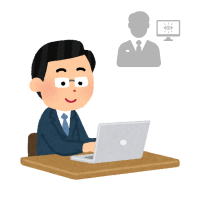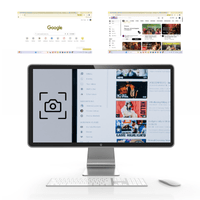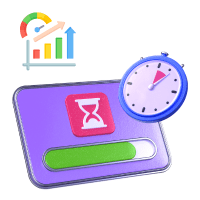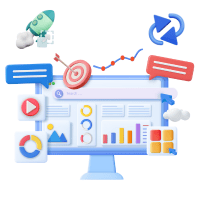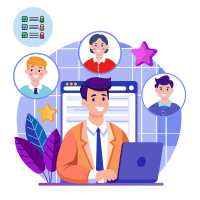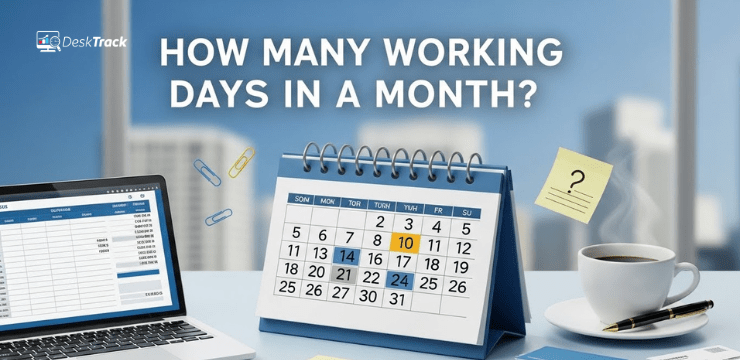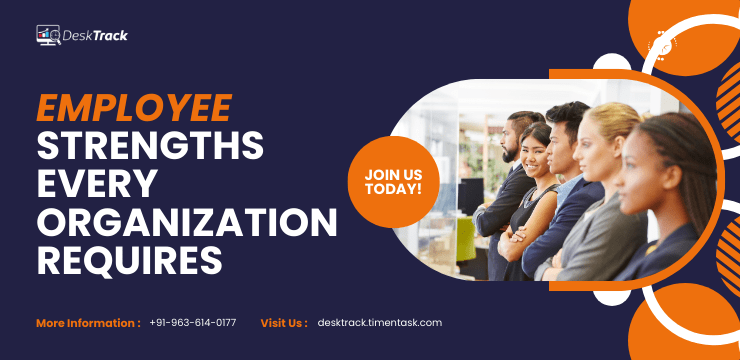
To successfully have your business functioning, you need more and more employee strengths. At least 37 of them. These are divided across general or common (23), sales (8), and customer success or CS (6). We call these the different chapters of excellence. Overall, you need to amplify these for more efficiency, productivity, and profitability.
Another thing to note is that there will always be a mix of employee strengths and weaknesses in your organization. So, it is ideal to always amplify strengths and do everything in your power to turn employee strengths into weaknesses.
To summarize, you will need techniques and tools to get the most desirable outcomes. However, first, what are employee strengths?
What are Employee Strengths?
Simply put, employee strengths are things, such as character traits, strengths, characteristics, and talents, that let them do their jobs effectively. Plus, these also involve soft skills like communication and organization. Furthermore, there are also hard skills, including knowing how to speak a particular language or being able to use certain types of technology.
Read Also: 22 Types of Employment: The Complete Guide
The Pillars that Build Key Strengths at Work
So, from where do employees get these key strengths at work? Are they born with them, or do they achieve them with experience? Here are the 4 pillars that build these positives in every human resource you have.
|
Employees who can quickly and better adapt to change are the first to upshift their strengths. These people go with the flow and keep improving at a consistent pace. |
|
Certain personality types also determine employee positives, such as HR with the XNXP personality traits are said to be more future-oriented, genius, and open-minded. |
|
Of course, no one is born with strengths. People get these from the positive and negative things they experience in their work life. |
|
By observing how others are doing better, the ones who really want to boost their strengths don’t get jealous. Instead, they think about how they can make a suitable version of these positives for themselves. |
How to Evaluate Employee Strengths & Weaknesses?
Make your workday more productive
Time tracking and work management can help you reach your goals
faster.
You already know that this is a continuous process. You, as an employer, have the skills and experience to evaluate employee strengths and weaknesses during the entire employee life cycle. However, we will still provide some tips that might be handy. Besides, you too need to keep improving.
- The evaluation starts before someone joins your team. After identifying the strengths you need, include them in the job description, so that you get the best-aligned HR into your talent pool.
- Asking strategic interview questions will help you know more about the specific soft skills required.
- To see the level of the applicant’s hard skills, provide them with follow-up assignments.
- It’s wise to regularly review performances, allowing you to provide your employees and teams with constructive criticism that lets you know how strengths and weaknesses flicker in your organization.
This way, employees also feel empowered and appreciated, while you keep monitoring consistently for efficiency and productivity with the best employee monitoring software.
22 Work Strengths Every Employee Needs
First, we will go for the first category. That is, the key strengths at work, every employee requires to properly do their job, lead their teams, and grow professionally in their careers.
- Dependability: You need people you can rely on in your teams and not the other way around. Taking responsibility, accountability, and meeting deadlines and quotas is something that should be in every worker’s conscience.
- Goal-Oriented: Even if one employee sets professional development goals, the entire team’s productivity and morale are skyrocketed, as it shows commitment to getting things done. Imagine if every team member is like that.
- Team-Oriented: Being a team player is something that every employee needs to work with others by setting their personal grudges aside and combining strengths to achieve the objectives. In short, do not mix their personal and professional lives.
- Flexibility: The work world is rapidly changing, and even if it’s not, a real-life project will never be sequential. So, teams must be ready to face the unexpected and shift the workflow accordingly.
- Optimism & Positive Attitude: Having a positive attitude and a level of optimism doesn’t mean that you don’t do anything about something that’s failing. Instead, you turn failure into success with the best and positive approach, ensuring that everyone is calm and can think clearly.
- Emotional Awareness: This is important for you to have as a manager or leader. What it does is help you reflect and grow personally. Plus, it lets you optimally empathize and communicate with others to create a suitable work environment.
- Trustworthiness: Trustworthiness must be at every level in the corporate ladder, and it comes from honesty. Trustworthy human resources are those whom everyone can rely on. Plus, they represent your business professionally and personally. However, they might take accountability for something that they didn’t do, which is not right.
- Leadership: As a leader or manager, you need to be able to handle pressure while also understanding every major and minor detail about your team members, such as their skills, how they work best, etc, and find an approach that works for everyone.
- Resilience: Resilient employees learn from mistakes, overcome obstacles, and turn issues into opportunities.
- Ambition: Being ambitious is a powerful inspiration that gets things done. Employees who have the drive to work set career objectives and go above and beyond to satisfy clients.
- Teachability: Other than self-learning, employees must also be teachable. When someone tries to show a better way to do something or correct their mistakes, the ideal thing they will do is listen and implement, instead of arguing baselessly due to ego.
- Consistent self-improvement ability: Employees with this strength at work find all room for improvement and then try their best to ensure that these rooms get shorter with practice, experience, and skill improvement over time, until they don’t exist.
- Accountability: As the name suggests, this means that you don’t blame others for your mistakes or give silly excuses if, for example, a project was delayed. Instead, you admit to what happened and try to suggest what you will do better to ensure that the same thing doesn’t repeat.
- Managing Up: For example, this one is getting rid of the ‘I can’t work with that guy or girl as my manager, she or he is too rude or not in synch with how I work’ attitude. Simply put, managing up means to adapt to the leadership style of your specific manager or leader.
- Discipline: That’s clocking in on time, being sincere, sticking to your principles, taking responsibility and accountability, making fewer leave requests, and being punctual, all combined.
- Creativity: This is an essential skill and strength to have for every employee. Thinking out of the box provides the best quality solutions, even to the most complex problems.
- Decision-Making: Again, if you are a manager or leader, having this skill and strength is a must-have for you. To be able to make the most important decisions in favor of the organization rather than HR is a skill that takes strong resolution, will, and years of experience.
- Conflict Resolution: Not every employee is the same. Everyone has their own perspectives, and thus, there will be conflicts within the teams that can hinder productivity. As a manager or leader, you need to be able to resolve these quickly and with a solution acceptable to everyone, or you can also make everyone accept the solution.
- Cultural Sensitivity: To work with teams, especially remote ones, having a higher respect and understanding for each other’s culture strengthens the professional bond even more. This leads to better teamwork and more efficiency as everyone keeps supporting each other.
- Data Analysis: As a manager or leader, especially in the tech industry, you need to have the required skills to analyze tons of data and make the right decisions without overburdening yourself or getting frustrated.
- Learning Agility: To be able to learn according to the requirement and adapt is a skill all employees need to survive in today’s competitive work world.
- Responsibility: Blaming no one for your mistakes is one of the most crucial employee strengths to have. Showing responsibility takes high resolve and dedication. Plus, we all know that with great power comes great responsibility.
Employee Strengths Every Sales Professional Needs
As we mentioned before, other than the general strengths we talked about, every sales team member must also have these additional 8 skills, specific to their roles.
- Organization: If you are a sales team member, you know how it feels to be overwhelmed with a lot of customer, product, and service data. To be able to organize it all so that you have the right information at the right time is key.
- Confidence: Even if you are not, it must not reflect in your voice. You must have the courage to make up for or compensate for slip-ups, because they are bound to happen in the sales infrastructure.
- Friendliness: It is important to be as polite and friendly as possible with your customer. Consumers sometimes don’t understand things even after countless explanations, which can be annoying. However, keeping calm under this pressure is a quality of the best sales professionals.
- Proactivity: To be able to provide quick solutions to client issues about the product before and after sales is essential for the sales team to achieve maximum success.
- Negotiation: Settling on a product or service price that’s satisfactory for your clients but beneficial for your business is also important. All in all, negotiation is a must-have skill for every sales employee.
- Pitching & Closing: Making a sales pitch that accurately shows that your product is useful and provides a solution to the client’s problem is a must-have skill for sales professionals. Other than that, to be able to close the deal on a positive note every time is what employees learn from experience and observation.
- Relationship Building: It is crucial to build a 99% personal relationship with your clients. Customers must feel comfortable while talking to you, and should be able to easily explain their requirements. However, there must be some boundaries. For example, sending birthday discount coupons but not attending the birthday parties of customers.
- Openness: A crucial strength for employees in the sales teams and departments is to be open to all kinds of challenges. Even the unexpected ones.
Must-Have Strengths at Work for Customer Success
Customer success is to keep the customer satisfied all the time. Whether it’s a new client added to your customer base or an old consumer’s problem solved, it all counts as CS. To achieve this, you need these 6 strengths in the workplace.
- Empathy: This is to be able to show that your customer’s problem is your own, and you are doing your best to solve it. (Even if you are just watching a soccer match with a cup of hot chocolate).
- Patience: There will be many challenges in the way of achieving customer success, for example, a client not understanding what the product does, the negotiations not going well, or an after-sales issue. The key is to remain patient and have faith in oneself that we will eventually find a solution.
- Attentiveness: When the client is explaining their requirements, you need to listen carefully with full focus and attentiveness. It is key to catch any keywords the customer might be repeating to be able to pitch that perfect solution.
- Communication: One of the top 3 work-related strengths is proper communication. Especially for customer success. There are many employees who know a lot but are not able to forward the information further down the hierarchy. Thus, learning how to convey your solution in the simplest way possible is crucial.
- Problem-Solving: To achieve customer success, solving their problems effectively is the main agenda. However, how you do it will decide whether the client will stay or not.
- Multi-Tasking: Customer success, human resources have no choice but to juggle between multiple tasks, keeping calm and not mixing up is one of the key employee strengths here.
Employee Weaknesses You Need to Spot Right Away
As we mentioned before, there will be both positive and negative aspects in your organization. That is, a mix of employee strengths and weaknesses. We now know the strengths. However, we can’t ignore these 5 weaknesses every worker has, either.
- Disorganization: When the data, the employee’s desk, and the employee themself is disarranged, it creates silos and gaps, for which there will be consequences. For example, zero mental peace, frustration, and not being able to find the right information at the right time.
- Impatience: This is a big weakness and a problem, especially with sales and customer success teams. Since clients are unpredictable and always come with unexpected challenges, we need to have a high level of patience to keep them satisfied. However, if we run out of it, it will backfire on us as the customer will switch to the competitor faster than we can say please.
- No Inspiration: When employees lack motivation, there is no enthusiasm to work. This means no engagement, zero efficiency, zero focus, and zero productivity. Employees will just work mechanically like machines.
- No Confidence: Having no confidence is an employee weakness that comes from constantly working under pressure. Plus, getting no rewards and recognition is also one of the main reasons that employees lack confidence.
- Poor Communication: At times, we can blame poor communication channels for this. At other times, the worker is to blame. This can be due to a lack of skill and experience. Fortunately, these can be gained via learning and experience.
Read Also: All You Need to Know About the Sandwich Leave Policy
Benefits of Amplifying Strengths in the Workplace
Let’s conclude on a positive note. Amplifying employee strengths in the workplace has many benefits. Here are 3 of them that we can confirm.
|
When you proactively spot the strengths of the workers and skyrocket them, it increases work engagement, leading to more employee empowerment and higher productivity levels. |
|
When the employee’s strengths are boosted, his weaknesses are compressed and are no longer an excuse for mistakes, leading to more focus and efficiency. |
|
When you value the unique talents and abilities of the employees, you improve their mental health, and then everything else, including better productivity and reduced turnover rates, falls into place. |
Easily Identify Employee Strengths & Weaknesses with DeskTrack
Efficiently identifying employee strengths and weaknesses can be tough and overwhelming. Especially if you have large teams, many departments, fieldwork employees, and remote teams. Doing so manually will leave you with less or no time for the work that matters. Let DeskTrack do all the real-time tracking, including work hours tracking, for you. It provides real-time insights that make spotting work gaps simple. You will even know if there is an insider threat, burnout risk, and more to distribute workloads according to the positives and negatives of your employees for maximum productivity. Try now and realize why 8000+ businesses around the globe have implemented it.
Frequently Asked Questions (FAQ)
Q. What is Employee Strength?
Ans. Simply put, employee strengths are things, such as character traits, strengths, characteristics, and talents, that let them do their jobs effectively. Plus, these also involve soft skills like communication and organization. Furthermore, there are also hard skills, including knowing how to speak a particular language or being able to use certain types of technology.
Q. How to Evaluate Employee Strengths & Weaknesses?
Ans. Here are some handy tips for the same purpose for you.
- The evaluation starts before someone joins your team. After identifying the strengths you need, include them in the job description, so that you get the best-aligned HR into your talent pool.
- Asking strategic interview questions will help you know more about the specific soft skills required.
- To see the level of the applicant’s hard skills, provide them with follow-up assignments.
- It’s wise to regularly review performances, allowing you to provide your employees and teams with constructive criticism that lets you know how strengths and weaknesses flicker in your organization.
Q. What are Employee Strengths Examples?
Ans. These 22 strengths are common among all employees.
- Dependability
- Goal-Oriented
- Team-Oriented
- Flexibility
- Optimism & Positive Attitude
- Emotional Awareness
- Trustworthiness
- Leadership
- Resilience
- Ambition
- Teachability
- Consistent self-improvement ability
- Accountability
- Managing Up
- Discipline
- Creativity
- Decision-Making
- Conflict Resolution
- Cultural Sensitivity
- Data Analysis
- Learning Agility
- Responsibility
Q. What are the Benefits of Amplifying Strengths in the Workplace?
Ans. You will experience these changes.
- Increased Engagement
- Increased Confidence
- Better Employee Mental Health & Business Bottom Line
Q. Are there Employee Weaknesses as Well?
Ans. Yes, you need to spot and turn to strengths, these employee weaknesses as well, before it’s too late.
- Disorganization
- Impatience
- No Inspiration
- No Confidence
- Poor Communication


